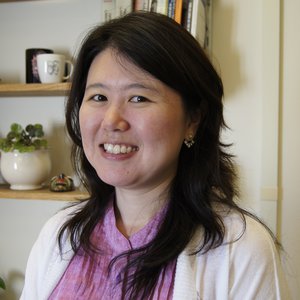Korean Language
Korean Language and Culture
Why Study Korean?
There are about eighty million speakers of Korean, including large groups in China, Japan, the United States, Canada, and the former Soviet Union. Korean is ranked as the thirteenth most widely used language in the world, and eighth (second among Asian languages) in the entire US. The visibility of Korean Americans and Korean culture has increased in recent years in the US. Korean is taught in over 50 North American universities, with programs expanding each year. Korean language courses and degrees are offered in over 20 universities in Europe, East Asia, and Australia. As Korea becomes more intimately associated with other countries and its influence in world economics and politics grows, the population of Korean speakers and Korean learning is likely to increase. Also, South Korea is an important export market for the US. Korean has a long and distinguished literary history and is the medium of the internationally popular Korean film industry.
About Hangul (한글)
Hangul is the native alphabet of the Korean language. It was created in the mid-15th century by King Sejong the Great and a group of scholars and was introduced to the public as Hun-Min-Jung-Eum(훈민정음) to improve literacy in Korea, and is now the official script of both North Korea and South Korea, being co-official in the Yanbian Korean Autonomous Prefecture of modern-day China. Hangul is a phonemic alphabet organized into syllabic blocks. Each block consists of at least two of the 24 Hangul letters (jamo), with at least one each of the 14 consonants and 10 vowels. These syllabic blocks can be written horizontally from left to right as well as vertically from top to bottom in columns from right to left. Originally, the alphabet had several additional letters (see obsolete jamo). For a phonological description of the letters, see Korean phonology.
TaLK Program: Teach and Learn in Korea
TaLK is a Korean government scholar program known as Teach and Learn in Korea. The program’s main objective is to invite and train native English teachers and overseas Koreans to teach practical English in after-school classes at the rural elementary school.
Korean Language Placement
All students who would like to take Korean are required to take a language placement survey, regardless of previous exposure to or instruction in Korean.
Please note that the language placement survey starts the placement process. Our goal is to place students at the level that best matches their skills.
After completing the survey, you will either be given a placement or be required to take a further assessment. Please refer to this link to navigate this process.
Language Placement Exams - College of Arts & Sciences at Syracuse University.
If you have questions about your placement, contact the Korean Language Coordinator, Seungmin Yun.
Questions concerning fulfilling your program’s language requirement can be directed to the Department Chair at lllchair@syr.edu.
Faculty

Seungmin Yun
Associate Teaching Professor of English to Speakers of Other Languages and Korean Language Coordinator
syun101@syr.edu